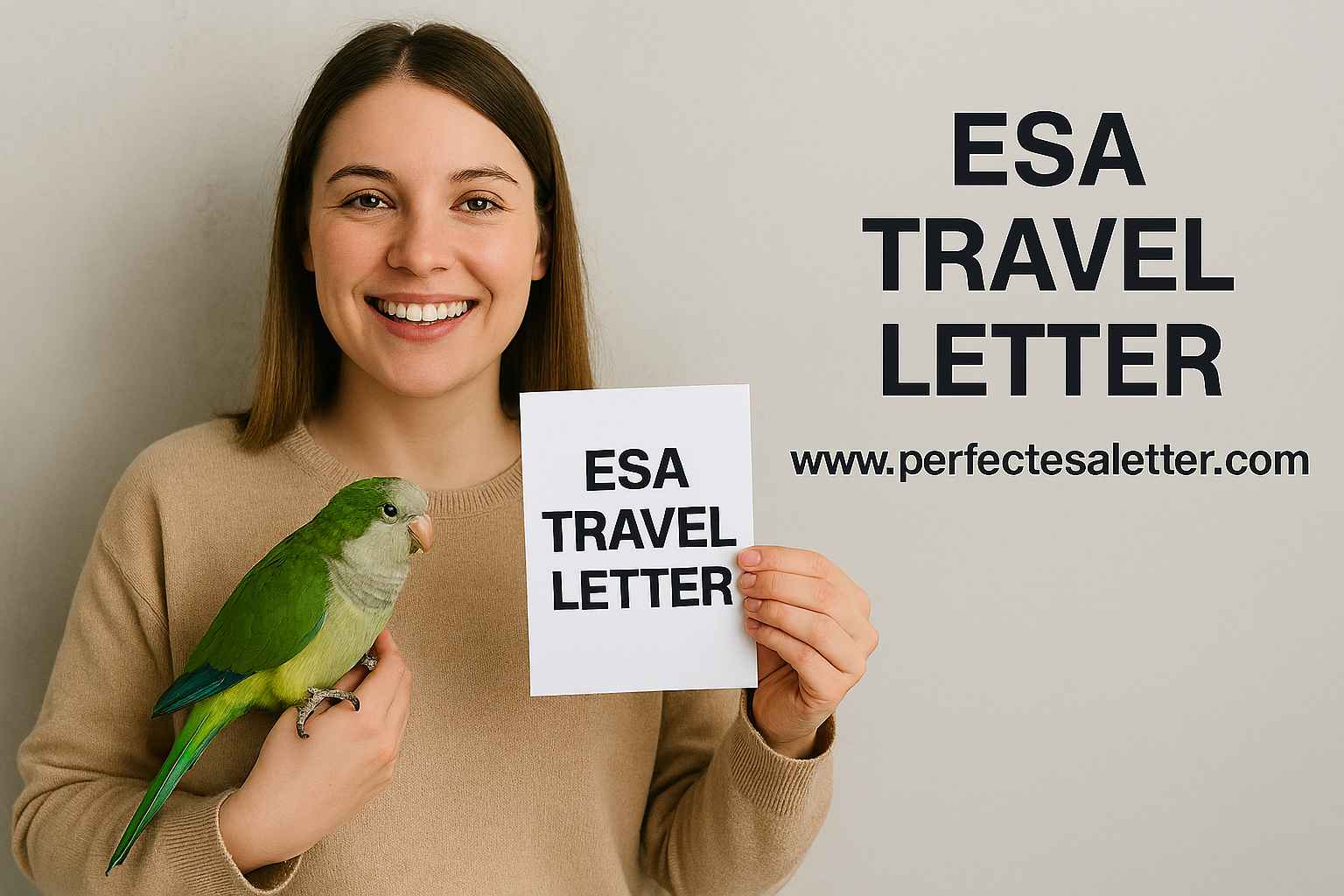Emotional Support Pet Flight: Complete Guide to Flying with Your ESA
Emotional Support Pet Flight: Complete Guide to Flying with Your ESA
Traveling can be stressful, especially for individuals managing anxiety, depression, PTSD, or other emotional health challenges. For many, an emotional support pet provides comfort and calm during overwhelming experiences like air travel. Flying with an ESA requires understanding current airline regulations, the necessary documentation, and how to prepare your pet for the journey.
This guide will help you navigate everything you need to know about emotional support pet flights in 2025.
“Get Yours Now!
Don’t wait until a landlord or airline tells you “no pets allowed.” Protect your rights today.
Please fill out this form and our team wil contact you ASAP.
Complete your assessment in minutes , get approved by a licensed professional, and receive your letter within 24 hours.”
1. What Is an Emotional Support Pet?
An emotional support pet (ESA) is an animal that provides therapeutic benefits to its owner through companionship. Unlike service animals, ESAs are not trained to perform specific tasks but play a vital role in reducing stress, easing anxiety, and offering emotional stability.
Common emotional support pets include dogs and cats, but small animals like rabbits, hamsters, or birds may also qualify.
2. Do Airlines Still Accept Emotional Support Pets?
In 2021, the U.S. Department of Transportation (DOT) revised its rules under the Air Carrier Access Act (ACAA). As a result:
Airlines are no longer required to recognize emotional support animals as service animals.
Most U.S. airlines treat ESAs as pets, meaning standard pet travel rules and fees apply.
Some international airlines may still allow ESAs with proper documentation.
👉 Key takeaway: You may not get free cabin access for your ESA anymore, but you can still bring your pet on board as long as airline pet policies are followed.
3. Documentation Needed for ESA Travel
If you’re planning an emotional support pet flight, the most important document you’ll need is a legitimate ESA letter from a licensed mental health professional.
What should an ESA letter include?
Official letterhead of the licensed professional
Confirmation of your emotional/mental health need
The professional’s license details (number, state, and date of issuance)
Recommendation for an ESA to assist in your treatment
While U.S. airlines no longer must honor ESA letters for free travel, some international carriers and housing providers still require them. Keeping your ESA letter updated ensures smoother travel and accommodations.
4. Airline Policies for Pets in Flights
Most airlines now categorize ESAs as pets. Here’s what you can generally expect:
Cabin Travel: Pets must fit in an airline-approved carrier under the seat.
Pet Fees: Airlines charge $95–$200 per flight segment.
Weight Restrictions: Usually up to 20 lbs for in-cabin pets (including the carrier).
International Flights: Rules vary depending on the airline and destination country.
👉 Always check your airline’s pet policy page before booking your ticket.
5. How to Prepare Your Emotional Support Pet for Flight
Flying can be stressful for animals too. Preparing your ESA properly makes travel smoother for both of you.
Tips for ESA flight preparation:
Choose a suitable carrier: Comfortable, airline-approved, and ventilated.
Familiarize your pet with the carrier: Let your pet spend time inside before the flight.
Exercise before boarding: Helps reduce anxiety and restlessness.
Bring comfort items: A blanket, toy, or something familiar.
Pack essentials: Food, water, medications, and waste bags.
6. International Emotional Support Pet Flights
Some airlines outside the U.S. may still honor ESA accommodations, allowing your ESA to travel in the cabin without extra fees. Examples (subject to change):
Lufthansa
Air France
LATAM Airlines
If you’re flying internationally, check with the airline months in advance to confirm ESA acceptance and documentation requirements.
7. Benefits of Flying with Your Emotional Support Pet
Bringing your ESA on a flight can:
Reduce anxiety during takeoff, turbulence, and landing.
Provide comfort in crowded, stressful airport environments.
Help with emotional regulation during long journeys.
Even though airlines treat ESAs as pets now, the emotional support they provide doesn’t change.
8. Alternatives to ESA Flights
If your airline does not allow ESAs or has strict pet rules, consider alternatives:
Service animal certification: If your pet qualifies through task-specific training.
Private pet-friendly airlines: Some carriers specialize in flying pets in comfort.
Ground travel: Trains, buses, or car travel may be less stressful for your pet.
Conclusion
While ESA flight regulations have changed, traveling with an emotional support pet is still possible. With the right ESA documentation, preparation, and knowledge of airline policies, you can ensure a stress-free journey for both you and your companion.
Flying with your ESA may require more planning than before, but the comfort and peace they provide make it all worthwhile.
✅ Final Checklist Before Your ESA Flight:
Valid ESA letter from a licensed professional
Airline-approved carrier
Check airline pet policies and fees
Prepare your pet with comfort items and exercise
Confirm international rules if traveling abroad
“Get Yours Now!
Don’t wait until a landlord or airline tells you “no pets allowed.” Protect your rights today.
Please fill out this form and our team wil contact you ASAP.
Complete your assessment in minutes , get approved by a licensed professional, and receive your letter within 24 hours.”



